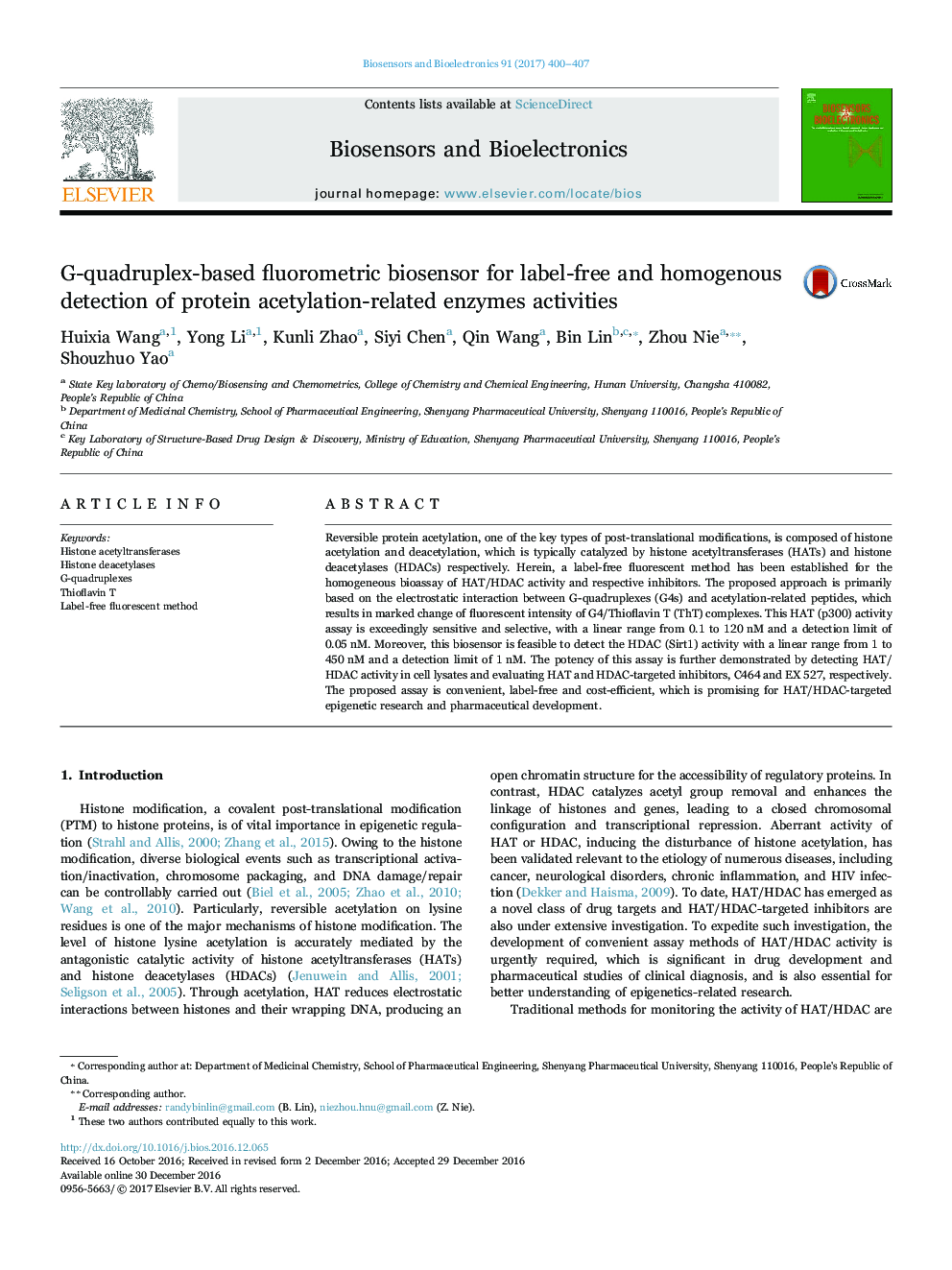| Article ID | Journal | Published Year | Pages | File Type |
|---|---|---|---|---|
| 5031176 | Biosensors and Bioelectronics | 2017 | 8 Pages |
Abstract
Reversible protein acetylation, one of the key types of post-translational modifications, is composed of histone acetylation and deacetylation, which is typically catalyzed by histone acetyltransferases (HATs) and histone deacetylases (HDACs) respectively. Herein, a label-free fluorescent method has been established for the homogeneous bioassay of HAT/HDAC activity and respective inhibitors. The proposed approach is primarily based on the electrostatic interaction between G-quadruplexes (G4s) and acetylation-related peptides, which results in marked change of fluorescent intensity of G4/Thioflavin T (ThT) complexes. This HAT (p300) activity assay is exceedingly sensitive and selective, with a linear range from 0.1 to 120Â nM and a detection limit of 0.05Â nM. Moreover, this biosensor is feasible to detect the HDAC (Sirt1) activity with a linear range from 1 to 450Â nM and a detection limit of 1Â nM. The potency of this assay is further demonstrated by detecting HAT/HDAC activity in cell lysates and evaluating HAT and HDAC-targeted inhibitors, C464 and EX 527, respectively. The proposed assay is convenient, label-free and cost-efficient, which is promising for HAT/HDAC-targeted epigenetic research and pharmaceutical development.
Related Topics
Physical Sciences and Engineering
Chemistry
Analytical Chemistry
Authors
Huixia Wang, Yong Li, Kunli Zhao, Siyi Chen, Qin Wang, Bin Lin, Zhou Nie, Shouzhuo Yao,
